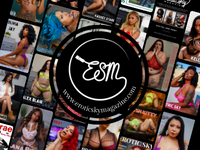Creating an Effective Tour Design
Anyone who knows me, knows that I’m not much of a “tutorial” person when it comes to talking shop about graphic design. Instead I try to help people get a grasp on good design through theory, and the discussion of the elements you need to have working together to make an effective tour, regardless of what style or look you may choose for a project.Anyone who knows me, knows that I’m not much of a “tutorial” person when it comes to talking shop about graphic design. Instead I try to help people get a grasp on good design through theory, and the discussion of the elements you need to have working together to make an effective tour, regardless of what style or look you may choose for a project.
In my last article for YNOTnews.com , I stressed the fact that my job as a designer requires me to be just as much a consultant and salesman as it does to be an “artist.” I also covered some more specific areas such as slogans, photo selection and censoring to name a few. This installment will be a continuation of that previous article where I can hopefully touch on a few more specific issues.
So let’s dig right in and get our hands dirty shall we? This time we’ll cover three more areas of tour design that I find particularly interesting.
Smack Talk
Yeah so you can “walk the walk” and make a nice looking site, but can you “talk the talk” to make it sell even better? Coming up with original text for a site is one of the most difficult challenges we face as designers. How do we consistently sell the same thing over and over again, site after site, but still try to put a slightly different spin or twist on it? There are some areas where you will not be able to avoid repeating yourself, but there are ways that you can help mix it up a bit. Try using a thesaurus to find alternatives to words that you find yourself using commonly.
Just as important is your ability to relate to the people who are interested in the type of content or specific niche that your site is designed for. A good example of this is gay sites and fetish sites. Often times ‘straight’ designers try to build these sites with little to no knowledge of the type of people they are designing for and the site fails miserably or has less than stellar performance. You need to be well versed in the terminology that these people use in their sexual preference and use it to relate to them and make the site seem as if it were designed by one of them. When a guy who likes a certain type of fetish visits your tour and can indentify with the language and message of the site, it raises his confidence and makes him more apt to buy a membership.
Exaggerated Claims
Almost all paysites and/or designers are guilty of this on one level or another, myself included … and it needs to stop. Sure you might be able to increase your initial ratios by stretching the truth and inflating your content numbers, or saying you have lots of something that you only have a little of; but in the long run it’s killing the recurring revenue and making surfers cancel early and go join another site, only to find the same thing and then cancel again. Plus, this decreases surfer confidence and in my opinion, makes them “think twice” before joining another site making glorious claims about its content. My advice: keep it real.
Easy To Navigate
How many times does it have to be said? I still see tours being made by guys that have navigation that is tiny, hard to read or not distinguishable from the rest of the stuff on the page. Why? The whole point of the ‘tour’ concept is to take the surfer by the hand and lead them through a tour of the features that the site has. Make it easy for your surfer to join, make it so easy that he need not take his eyes off the content of the tour to be able to locate the join button. I personally prefer to use two join buttons on a tour: one at the top, and one at the bottom if I can justify fitting it into my layout. Make it flash, pulsate, swell, blink, explode, flip over, spin around, change colors, whatever you want … but make those join buttons to get people’s attention.
Next time I’ll talk a little about flash and how I feel about its place in adult design.










